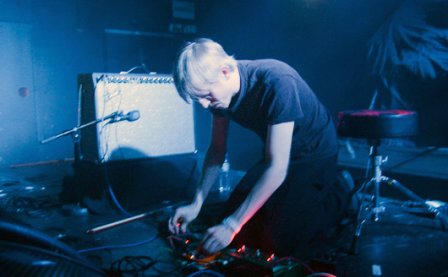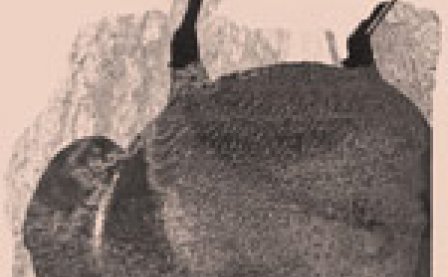Much of the “experimental” music landscape, having already witnessed the constant deconstruction and repetition of tonal and rhythmic elements and tracked the constant shifts in genre and instrumentation, tends to focus on a holistic process embracing mood or atmosphere as the primary content of a work. This can lend the piece a kind of purity, prizing as it does the affective qualities of music that seem so particular to sound. But purity is both a blessing and a curse. Atmosphere, when it goes stale, feels empty of meaning. When the focus on one mood is too pointed, the work doesn’t move. Black Tie, which was created for a looping installation, showcases Erik Skodvin’s ability to evoke atmosphere and soundtrack a moment, but its funereal pace prevents its two pieces from developing much past their initial states.
Skodvin’s Svarte Greiner project has pushed the boundary of dark ambient into new technical territory. Although he uses synthesizers on “White Noise,” “Black Tie,” as with many of his other works, primarily uses processed strings. For a genre so indebted to sampling and synthesis, the textures of bowed and plucked strings sound almost novel. In their use on Black Tie, Skodvin reduces their range to a single note or a swarm of delayed bowing. These techniques abstract the instrument from its typical use, cloaking the source of the sound so that listeners can feel more more involved in the space he is creating.
That space remains relatively static. Although both tracks of Black Tie evolve slowly over their course, the space they travel in rarely feels markedly new. Some building takes place. Some new elements appear, some old ones dissolve. This does not differ much from a typical dark ambient program, but it’s the spareness of Black Tie that dooms it. The striking beginning of the first track, a single bass note repeating endlessly, becomes tired quickly, because it is the only intelligible texture for large portions of the work. This minimal approach captivates in its initial moments, but as the piece continues, only adding a few extra layers of strings or processing the bass note through distortion, its strengths become weaknesses. Its stark simplicity transforms into plodding, unable to carry the weight of the entire piece on its back.
“White Noise” is more typical dark ambient territory, with its synthetic drones and vocal-like pads. “White Noise” also evolves more apparently, and the bass work at the beginning fades through some of the middle. When it returns, though, it is the same two-note phrase in a slightly different texture. This line is not a leitmotif, returning only briefly to evoke an earlier idea, but a constant, even apparent as an absence. The formless ambience that surrounds it has moments of great depth, but often itself feels repetitive, as if caught in too much feedback and endlessly looping on itself. “White Noise” does feature an intense, throbbing ending, perhaps the highlight of the album, but if you’re listening closely, you may not get to it; the last minutes hardly justify the length of the piece.
Black Tie is a presumably excellent soundtrack for its looping installation, but as a standalone album, there is rarely enough substance or movement to engage listeners through its 20-minute tracks. With such a minimal palette, single textures can’t stand alone. It’s atmospheric to a fault: airy, empty, but for a grey cloudscape. We see a space in which the same puffs of smoke continually drift about the room. In the search for a fully evocative moment, Skodvin misses the temporal movements that are so crucial to the development of a mood.
More about: Svarte Greiner




